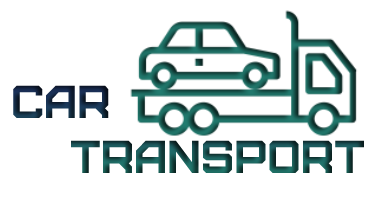When you need to transport your vehicle over long distances, whether it be across town or across the country, car shipping is often one of the most convenient and cost-effective options Car Gets Picked Up For Shipment. However, some people wonder if they need to be there when the transport company arrives to pick up their car. This article will walk through the typical process of having a vehicle picked up for shipment and discuss whether your presence is required or not.
Car Gets Picked Up For Shipment – The Pickup Process
Most car shipping companies will have a detailed online or phone ordering process where you provide information about your vehicle like the make, model, year, mileage, etc. You’ll also need to confirm the pick-up and drop-off addresses and dates. Once your order is booked, a transport driver will be assigned to your shipment.
On the scheduled pickup date, the driver will arrive to inspect your vehicle. They will look for any pre-existing damage to document ahead of time. The driver may take photos of the car from multiple angles. They will also verify information like the VIN matches what was provided.
Common Vehicle Inspection Points
| Exterior | Interior | Undercarriage |
| Paint condition and scratches | Upholstery and carpet wear | Rust or damage from road debris |
| Dents or damage to body panels | Cracks in dash or trim pieces | Suspension or exhaust system issues |
| Condition of wheels and tires | Functioning of accessories and gauges | Leaking fluid lines or wiring issues |
The driver will want to get detailed photos of any pre-existing flaws to have a clear record on file. Taking time to thoroughly document the vehicle’s condition upfront can help avoid disputes later on regarding responsibility for damages incurred during transport.
Is Your Presence Required for Pickup?
In many cases, you do not actually need to be present when the transport company arrives to pick up your vehicle. As long as you’ve provided all the necessary details and keys are left in an agreed upon secure location, the pickup can be completed without you being there.
However, it is generally recommended that you try to be present if possible. Being on-site allows you to ask any last-minute questions, request additional photos be taken of hard-to-capture areas, and ensure everything goes smoothly from the start. You also get the chance to see the truck and meet the driver who will be responsible for your car during shipment.
There may be some special circumstances where your presence is explicitly required by the transport company’s policy. For example, if you need to sign any paperwork authorizing the pickup or if there are limitations on where the keys can be safely left. But for basic pickups, most reputable carriers are fine completing it without you there as long as proper arrangements have been communicated in advance.
Benefits of Being Present versus Not
Benefits of Being Present
- Opportunity to ask follow-up questions or address any concerns face-to-face with the driver
- Able to closely monitor the vehicle inspection and photos being taken
- Confirm the truck and driver match what was scheduled for your shipment
- Ensure all necessary steps and paperwork for pickup are properly completed
Car Gets Picked Up For Shipment – Benefits of Not Being Present
- Avoids having to take time off work or rearrange your schedule for the pickup window
- Driver can still complete pickup efficiently without delays from your availability
- You don’t have to wait around at the pickup location
- As long as keys are securely stored, the pickup can happen independently
In summary, while your physical presence is usually not an absolute necessity for a standard vehicle pickup, it may provide some peace of mind. Being able to directly oversee certain parts of the process can help give you added reassurance everything is taken care of properly from the start.
However, if scheduling doesn’t allow for you to be there or if you simply prefer the convenience. Reputable transport companies are generally equipped to smoothly complete pickups without requiring you to be on-site. Communicating your car’s details and transport preferences upfront is key regardless.
